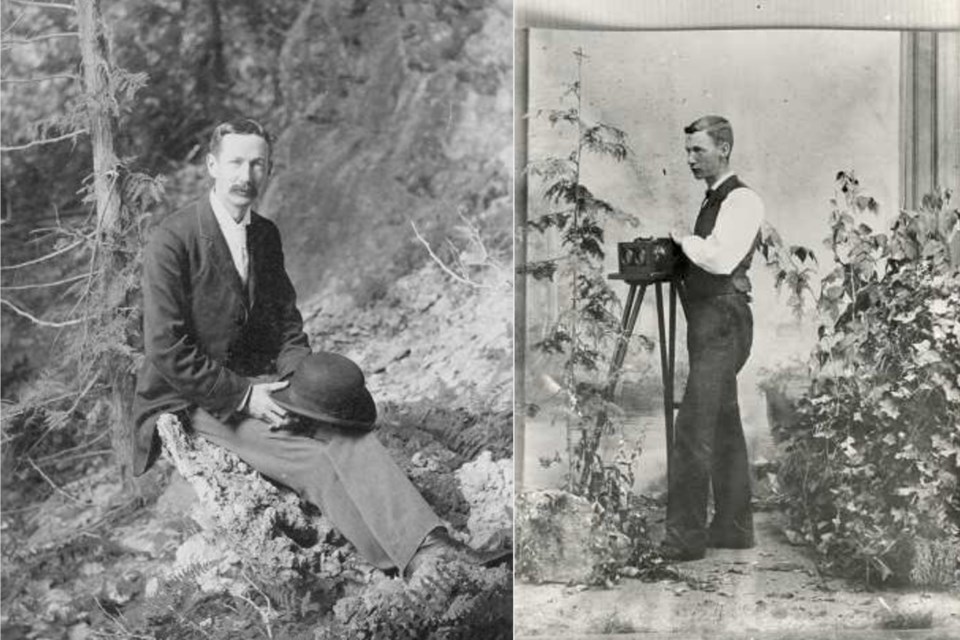No single person can be credited with the invention of the camera. Over hundreds of years, people like Johann Zahn, Joseph Nicephore Niepce, Louis Daguerre and Alexander Walcott made advances in the science of capturing and preserving images. One of the little-known pioneers in the history of photography was a remarkable man from Elora.
John Robert Connon was born in 1862. His father, Thomas, was a Scottish immigrant and his mother, Jean (nee Keith), was one of the first children born in the newly-founded village of Elora.
Young John worked in the family’s general store while attending school. He was greatly influence by David Boyle, the principal of the Elora Public School who would one day become the first provincial archaeologist of Ontario, first secretary of the Ontario Historical Society and first superintendent of the provincial museum. Boyle was something of a renaissance man, and under his guidance Connon developed a wide range of interests that included geology, astronomy (he owned one of the best telescopes in the region), music, engineering and the history of Elora.
Boyle and Connon became lifelong friends.
Connon also developed a strong interest in photography, which was growing in popularity as an art form and as a hobby – for those who could afford it. He was influenced by his father, an amateur painter and a photography enthusiast who opened a studio in Elora. Thomas allegedly designed a new roll-holder for film, only to have his idea stolen and patented by the Eastman-Walker company.
John became an expert photographer, particularly of outdoor scenes. Unlike the much better-known American photographer Matthew Brady, who actually delegated a great deal of his work to assistants (but accepted the credit), Connon hauled his own photographic equipment out into the field and took the pictures himself.
Moreover, with the nearest retailer of photographic equipment miles away in Hamilton, Connon had to become resourceful and self-sufficient.
Connon created an impressive body of work. He loved to photograph scenes in Elora and Fergus, and locations along the Grand and Irvine Rivers, especially sites in the Elora Gorge, as well as the surrounding countryside. He also took his camera beyond the region of Wellington County to photograph such sites as Niagara Falls.
By Connon’s time, major technical innovations were being made in the medium of photography. Connon was among the photographers who wasn’t satisfied with the limitations of the equipment available to him.
In 1885, the Eastman Dry Plate and Film Company introduced flexible roll film. Previously, photographers had been obliged to use glass or metal photographic plates. Connon became more than a dedicated user of this invention; it enabled him, in 1886, to begin the development of one of the first cameras that could capture a full 360-degree photographic panorama with just a single exposure.
Connon’s camera was ahead of its time, and he patented it in New York and London, perhaps recalling his father’s experience. He then entered a business agreement with Carl P. Stirn, who, with his brother Rudolf, owned a camera factory in Berlin, Germany, where they manufactured Stirn’s Patent Photographic Concealed Vest Cameras. Connon’s design became the Wonder Panoramic camera. It would inspire generations of full-circle panoramic cameras, including the Cirkut cameras by Kodak.
Unfortunately for Connon, his invention didn’t bring him financial success or professional recognition. The art of panoramic photography was slow to catch on. Other versions of the camera, patented by other inventors, made his camera, important though it was, obsolete.
Connon didn’t just record his world with a camera. He was also a writer.
Aside from a brief sojourn in New York, he lived his whole life in Elora. In the early 1900s, at the urging of his mother, Connon began his chronicle of the town’s history, including accounts of the early days of the townships of Pilkington, Woolwich and Nichol. He initially had his work published in weekly installments in the Elora Express.
Connon lost interest in the project for a while after his mother’s death, but resumed it with the encouragement of Fergus historian Hugh Templin. His History of Elora was published in book form late in 1930. A few weeks later, on January 18, 1931, Connon died. He was buried in the cemetery of the little town that he had helped, in more ways than one, to put on the map.



